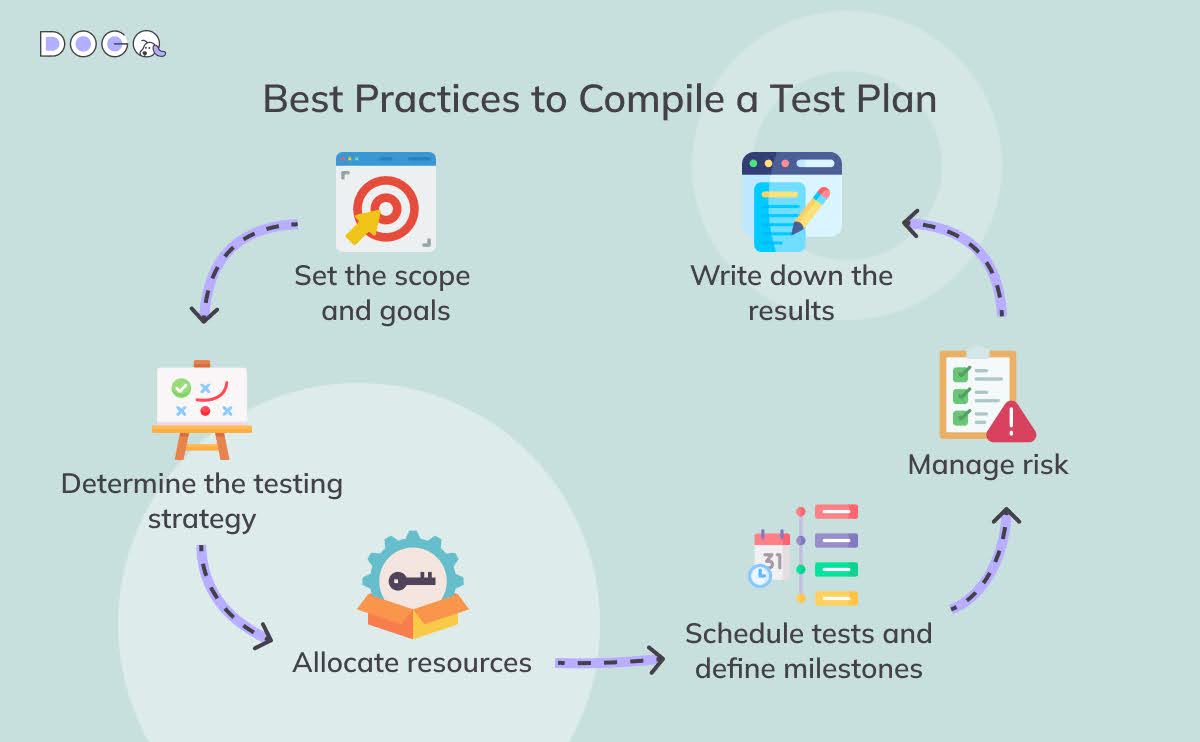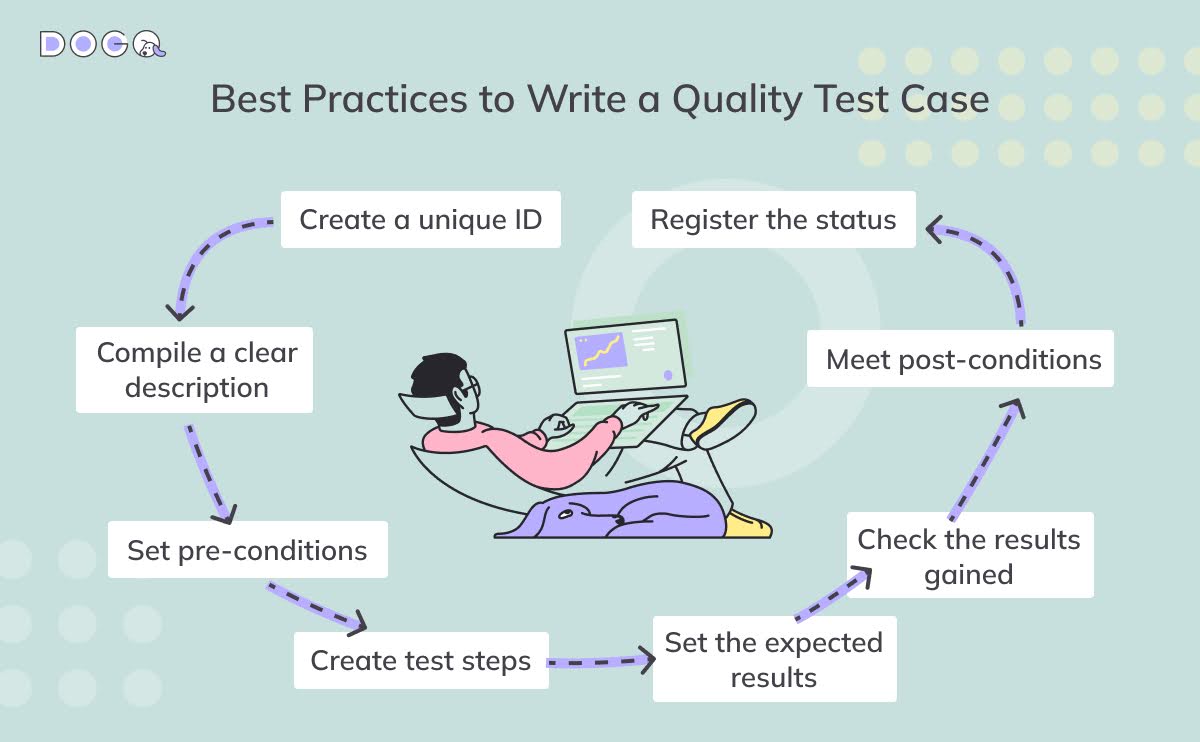Test Plan vs. Test Case: Decoding Testing Strategies
Explore the peculiarities and differences between a test plan vs. a test case, and discover the related strategies to enhance your testing strategy and QA process.

Hello, dear QA enthusiasts! Today, we continue our deep dive into the complex world of testing strategies and the STLC. Two pivotal elements in this process are integral to the testing lifecycle, yet they differ significantly in purpose and use: the test plan and the test case.
In this article, we’ll talk about their distinct characteristics, roles, and how they synergistically contribute to the QA process. Let’s get started!
Table of contents
- What Is a Test Plan?
- Best Practices to Compile a Test Plan
- What Is a Test Case?
- Best Practices to Write a Quality Test Case
- How Does a Test Plan Differ from a Test Case?
What Is a Test Plan?
This is like a comprehensive guide, outlining the strategic plan, schedule, and resources allocated for the QA activities of a software project. It functions as a detailed blueprint for the entire testing stage, providing an overview of the objectives, techniques, and resources committed to ensuring the software’s quality:
- It brings project teams a methodical approach to the testing process;
- It facilitates transparent communication with stakeholders regarding the testing approach and what’s expected;
- A thoughtfully designed test plan allows for the early identification of potential challenges, paving the way for a smoother testing operation and a superior end product.
Best Practices to Compile a Test Plan
So many men, so many minds – the same goes for creating a test plan, but let’s look at the best practices in this procedure:
- Set the scope and goals: any plan begins by defining the objectives and scope of testing. It outlines what aspects of the software will be tested and the goals that the testing process aims to achieve;
- Determine the testing strategy: this part articulates the strategy for the testing process and explains the reasoning behind the choice of these specific tests and methodologies, providing a clear rationale for the selected approach;
- Allocate resources: then, you need to define the human and technological resources required for testing, including the testing team, tools, and test environments. It also outlines the roles and responsibilities of each team member;
- Schedule tests and define milestones: a crucial part, which includes timelines for each testing activity and milestones to be achieved. This ensures that testing is conducted systematically and aligns with the project timeline;
- Manage risk: it addresses potential risks in the testing process and outlines mitigation strategies. This could include issues like resource constraints, technical challenges, and dependencies on other project activities;
- Write down the results: finally, you need to specify the expected deliverables, such as testing cases, reports, and metrics. It also details how testing progress and results will be reported and to whom.

As you can see, the testing plan is the roadmap for the testing phase, guiding the team through each step and ensuring that the testing objectives are met comprehensively and systematically.
What Is a Test Case?
A test case comprises a series of steps and inputs designed to check if a specific function of an application operates as intended. It stands as a crucial element within the testing process, offering explicit guidelines for confirming that distinct aspects of the software adhere to the required standards:
- It ensures that particular features of the software function correctly;
- By segmenting the testing into smaller, more manageable units, cases guarantee comprehensive examination of all software features;
- They are also valuable as records for subsequent testing phases, providing the flexibility to be adapted or reused according to the need;
- Well-crafted test cases enhance team and stakeholder communication, clearly outlining the tested elements and outcomes achieved.
Best Practices to Write a Quality Test Case
Now, let’s take a look at the best practices of case creation:
- Create a unique ID: giving a unique identifier for each test case facilitates easy reference and organization;
- Compile a clear description: a brief overview of what the case is intended to verify, usually includes the functionality being tested and its relevance;
- Set pre-conditions: any prerequisites or states must be met before the test can be executed, such as specific configurations or data setups;
- Create test steps: detailed steps should be followed during the test, including specific actions to be taken by the tester and inputs to be provided;
- Set the expected results: you should know what test outcome to anticipate if the software functions correctly. This is crucial for determining whether the test passes or fails;
- Check the results gained: the actual outcome of executing the test, recorded during the QA process;
- Meet post-conditions: the state in which the software should be after the test is executed, which may include cleanup actions or reverting to a previous state;
- Register the status: indicates whether the case passed, failed, or encountered any errors or anomalies.

Thus, cases are the building blocks of the software testing process, essential for systematically validating the functionality and performance of software applications.
How Does a Test Plan Differ from a Test Case?
Grasping the difference between a test case vs. a test plan is crucial. While they both serve important roles in the quality assurance process, they differ significantly in purpose, scope, and application. Let’s delve into the distinctions between these two fundamental elements of testing:
Hence, while a test plan provides a strategic blueprint for the entire testing operation, test cases focus on the detailed execution of tests on the software. Each plays a vital role: the test plan orchestrates the broader testing strategy and methodology, while test cases contribute to the meticulous and structured assessment of individual software elements. Grasping how a test plan vs. a test case interrelate and complement each other is fundamental in a smooth testing process.

Are test cases included in a test plan?
Test cases do not typically form the content of a test plan, but some of them can be linked to it. The plan provides a comprehensive outline of the testing strategy, offering a summary of the types of test cases to be formulated and implemented.
What is the difference between test strategy and test plan?
A test strategy differs from a test plan in the scope and detail: the first one is a broad, high-level document that sketches out the general methodology for the QA process, whereas a test plan is specific to an individual project, offering in-depth details about the testing scope, resource allocation, and timeline.
What is the difference between test cases and test scenarios?
Briefly, test scenarios describe the big picture, proposing various situations or functionalities to be evaluated. Conversely, test cases encompass the exact steps, encompassing inputs, actions, and anticipated outcomes, that are necessary to conduct the test for a given scenario.
Latest Posts:
System Testing vs. Integration Testing: Key 5 Differences. Explore the two testing types, which both play pivotal roles in the testing pyramid.
Intelligent Test Automation: a New Trend in the World of QA. Explore how ITA is setting new benchmarks in accuracy, and effectiveness for QA.
Playwright vs. Selenium: an Ultimate Guide for Your QA Tester Career Path. How do the tools differ and what are the implications for your career?
Related Posts:
How To Create Test Scenarios for Comprehensive Testing. You’ve seen the term “test scenarios” many times but don’t really know what it is?
How to Build a Test Automation Strategy: Steps, Tips, and Tools. We share some tips on how to define your priorities and select automated test tools.
Testing Techniques and Tips for Improving Software Testing Quality. The ways to improve software testing quality through planning, reporting and automation testing.
